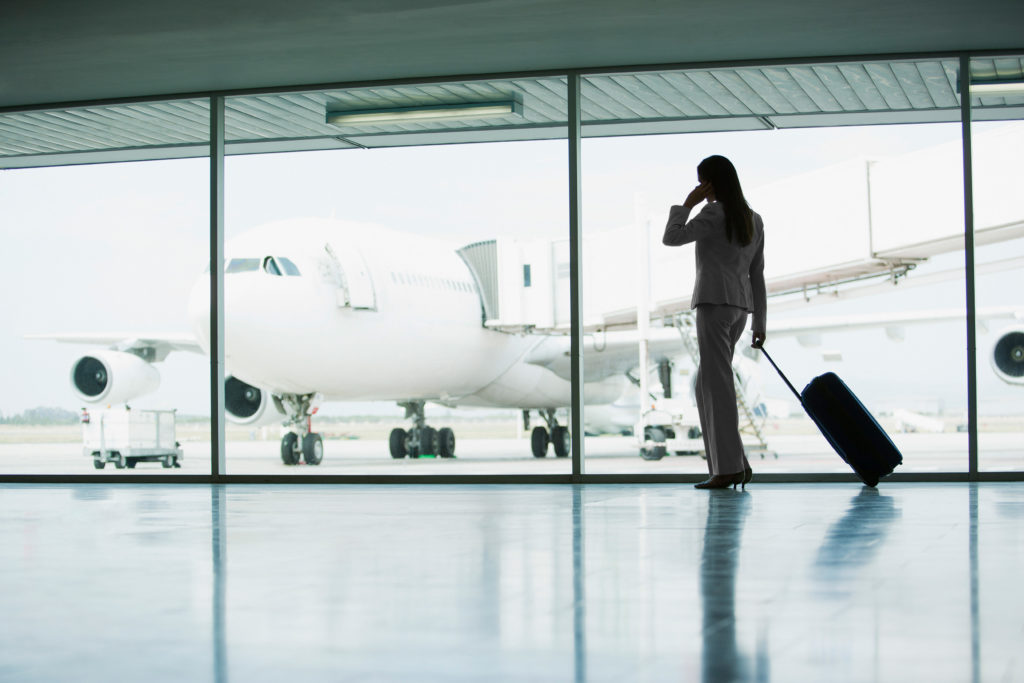In 2021 the air transport industry has been forced to adapt nearly all operations to adhere to rapidly changing regulations and travel requirements, from health status verifications to fluctuating border controls based on virus hotspots and emerging new COVID-19 variants like Omicron.
It has also been a year punctuated with extreme weather events, including an unprecedented deep freeze in Texas and record heatwaves in Canada. The year ended with the COP26 summit articulating a vast volume of work that needs to happen immediately to avoid climate catastrophe.
Sebastien Fabre, CEO, SITA FOR AIRCRAFT, examines the five critical travel technology trends emerging from the pandemic and set to transform the industry in 2022 and beyond. He calls for sustainability to be baked into today’s essential industry transformation.
- Automation and digital health are the keys to industry recovery
Despite airport and airline IT budgets being slashed by the COVID-19 crisis, spending on automation of passenger processing is seeing a rise. The industry continues to battle new challenges with COVID-19 variants, and while there are many hurdles that must be overcome to stimulate global travel, the need for low-touch and efficient operations grows stronger. Automation and digitization are crucial to give passengers the confidence and control back to travel efficiently and reduce processing times to acceptable levels. Biometric technology offers an essential solution to address this issue with airports around the world investing in future-proofing operations.
In addition to automated passenger processing, we need to standardize and digitalize health verification to ensure easier, safer, and more seamless travel in the face of ongoing health concerns. In November 2021, SITA announced that to support the recovery of the travel industry, it will make its Digital Travel Declaration solution – which allows passengers to share required travel and health documentation with governments ahead of travel – available to governments free of charge globally. This is aimed at addressing the global challenge of submitting and verifying health documentation which remains a major impediment to the recovery of the global travel industry.

- Airport operational efficiency and sustainability will work in harmony
Agility, scalability, and operational efficiency have become critical considerations for airports’ business models amid the fast-changing environment imposed by the pandemic. Airports will need to operate leaner operations, drive ancillary revenue, and adapt to fluctuating passenger numbers. For that reason, cloud technology remains a key investment area. At the same time, almost all airports also plan to implement business intelligence solutions to gain better visibility across their operations, focusing on key areas such as flight operations and asset management.
Through operational efficiency, airports can also drive significant sustainability gains. According to ACI, 235 airports across Europe have committed to net-zero by 2050, and more than 90 airports are now set to achieve net-zero carbon emissions by 2030. A recent collaboration between SITA and Envision Digital is designed to help these airports in their journey towards meeting their sustainability commitments, combining solutions that optimize airport operations to reduce local emissions while optimizing infrastructure-related energy consumption.
Following calls from COP26 and rising passenger demands for more sustainable travel, airports have a sharp focus on reducing Scope 1 and 2 emissions. Most airports have implemented sustainability initiatives such as building airport infrastructure (green spaces, use of natural light and renewable energy), widely available recycling points, and smart building technology and automation. Airports are showing a continued interest in IT that supports more sustainable printing practices as well as end-of-life recycling of IT equipment and promoting energy savings. Outside of the cost-saving benefits, Industry figures estimate that improving aviation operations and infrastructure could reduce emissions by up to 10%.

- The pressure will remain on airlines to be more sustainable
In the air, significant efficiencies can be achieved today with potential fuel and CO2 emissions reductions of up to 10% for the flight phase. Technology can provide pilots and dispatchers with real-time access to accurate multi-source weather reports. Today’s solutions can help pilots optimize their flight profiles to maximize fuel efficiency, reduce carbon emissions and improve situational awareness for safer, more comfortable flights. eWAS Pilot provides accurate 4D weather forecasts and real-time updates from various sources to warn about hazards such as thunderstorms, lightning, clear air turbulence, strong winds, icing, and even volcanic ash. Based on this information, pilots can dynamically determine the most economical flight paths that avoid adverse weather.
The software suite OptiFlight helps save aircraft fuel and reduce CO2 emissions during the three flight phases: climb, cruise, and descent. The focus currently lies on the climb-out – the most fuel-consuming phase of a flight – and the cruise phase. In combination with airport operational efficiency, solutions like these can have a major impact today while alternative fuels are being developed and refined over the following decades. In 2022 SITA will expand its focus to offer new technologies that support ground movements as well as aircraft condensation trail reductions.
- Regional and domestic airports must prepare for a post-pandemic boom
With domestic air travel in bigger markets such as the United States, India, and China, the first to recover from the COVID-19 pandemic, regional airports are set to play an outsized role in the coming years. The question is, are they prepared for a surge of passengers?
While the operational challenges for international hubs are similar, we’ll likely see regional airports experiencing capacity constraints sooner as domestic travel resumes at an accelerated pace. The potential for national economic prosperity will also be significantly affected by their ability to improve the passenger journey while cutting costs and managing evolving health requirements through technology.
Passengers traveling from regional airports also demand the same digital experience and efficiencies they receive at international hubs. On top of that come greater airline expectations, route volatility, space constraints, staff multi-tasking, and a myriad more. Then, of course, as journeys become more digital, there’s the growing need for seamless interoperation across travel systems and technologies – not just among airports large and small, but also with other modes of transport.
Ready-to-go cloud-based (SaaS) airport management capabilities to help optimize resources while supporting collaborative processes and decision-making will be essential for these airports to thread the needle between passenger satisfaction, capacity, and profitability.
As travel becomes more connected and intermodal, having unified digital systems that simplify the passenger journey across land, sea and air will become increasingly important.

- Blockchain will become a key technology and bring new efficiencies to air travel
Blockchain holds immense potential for the air transport industry because of its unique ability to share information instantly, securely, and privately between the dozens of stakeholders across airports, governments, airlines, and OEMs.
The air transport industry spends US$50bn a year on aircraft spare parts. Yet, tracking and tracing of these spare parts as they move between airlines, lessors, and original equipment manufacturers (OEMs) remains largely manual.
There is no one single view of how to track hundreds of millions of records of transactions between these entities, exacerbating risk and cost. And if there is any inconsistency between stakeholder systems, the risk of data overlap increases – as does cost.
Airlines face some of the most complex issues related to MRO, from a lack of digital records to supply chain difficulties, system inconsistencies, and burdensome costs. We believe that blockchain will be vital to solving these challenges.
For pilots, SITA has developed a proven blockchain-based solution enabling the verification of an electronic personnel license (EPL) without network connectivity. Allowing offline verification in an efficient and privacy-preserving way, SITA’s contribution supports the International Civil Aviation Organization’s (ICAO) adoption of an industry-wide digital standard for the use of EPLs on international flights.
On the passenger side, blockchain could solve many of the efficiency challenges the industry faces today. In 2021 SITA, together with Indicio.tech and the Aruba Health Department, trialed the Aruba Health App, a pilot that makes it easy for visitors to share a trusted traveler credential – based on their health status – privately and securely on their mobile device. This credential will provide access to participating hospitality sites on the island.
About SITA
SITA is the air transport industry’s IT provider, delivering solutions for airlines, airports, aircraft and governments. Our technology powers more seamless, safe and sustainable air travel.
With around 2,500 customers, SITA’s solutions drive operational efficiencies at more than 1,000 airports while delivering the promise of the connected aircraft to customers of 18,000 aircraft globally. SITA also provides technology solutions that help more than 70 governments strike the balance of secure borders and seamless travel. Our communications network connects every corner of the globe and bridges 60% of the air transport community’s data exchange.
SITA is committed to being a carbon neutral company by 2022 through our UN recognized Planet+ program, while also developing solutions to help the aviation industry meet its carbon reduction objectives, including reduced fuel burn and greater operational efficiencies at the airport.
SITA is 100% owned by the industry and driven by its needs. It is one of the most internationally diverse companies, providing services in over 200 countries and territories.
For further information, go to www.sita.aero

